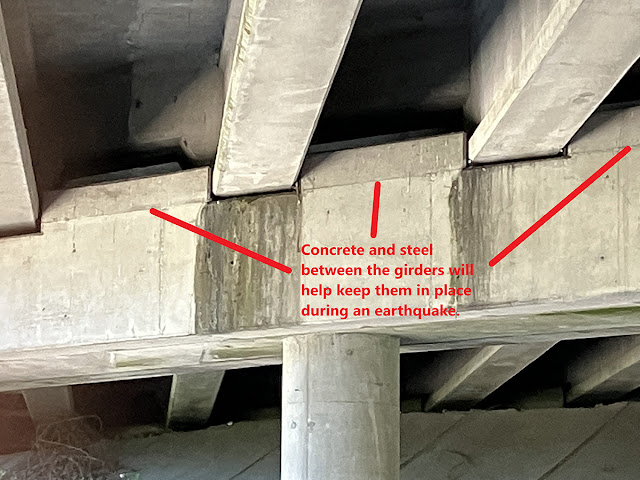Seismic projects will help bridges stand up to a major earthquake
By Tom Pearce
Many an emergency manager in the Pacific Northwest, particularly along the coast, would be eager to tell you the question they ask themselves on a nearly daily basis: “What if The Big One happened tomorrow?” The Big One refers to a major Cascadia Subduction Zone earthquake. Researchers say it’s not a matter of ‘if’ it will happen, but ‘when.’
Our agency is also very aware of the potential for a large earthquake anywhere in western Washington, whether it’s the Cascadia fault or one of the multitude of others that run through the Puget Sound region. That’s why we have a seismic retrofit program as part of our bridges and structures preservation plans. By strengthening our infrastructure, we can reduce the chances of a catastrophic collapse when The Big One hits.
As we developed plans to strengthen bridges and overpasses, we worked with the Department of Emergency Management and others to identify key “Lifeline Routes,” a series of roads determined as critical to move emergency vehicles, goods and supplies for disaster response. We’ve planned our seismic retrofit projects so that we can support these vital corridors.
 |
| If the concrete column cracks during an earthquake, a steel jacket like on this column helps hold it together and reduces the chances an overpass could collapse. |
This summer we will begin construction on two seismic retrofit projects – one on Interstate 5 in Lynnwood and at Northgate, and another on I-405 in Renton and Bellevue. These projects will help keep overpasses standing in an earthquake.
The two parts of a bridge most susceptible to an earthquake are the columns and piers on which the girders rest, so we focus on those. To help keep bridges standing, we wrap the columns with inch-thick steel jackets. That way, if the column in the concrete cracks, it remains in place.
 |
| This bridge has girder stops, but not steel jackets on the columns that support the piers. |
As for the girders, they sit on top of the piers that the columns support. If there is nothing in between the girders, they could come loose in an earthquake and cause a collapse. To help prevent this, we install steel and concrete reinforcing, called “bolsters.” These keep the girders from shifting.
So far we have completed full work on about 325 bridges and partial retrofits on about 115 others of the roughly 900 overpasses designated for retrofit.
It is important to note, despite this work we can’t guarantee all bridges will be useable after a major earthquake. A bridge may not be able to support traffic after a strong earthquake, even after being retrofitted. The idea is to keep it from collapsing and damaging even more infrastructure.
In the years ahead we will continue to strengthen our highway system to better stand up to a major earthquake. With a price tag of $1.5 billion, it could take decades to complete. In the meantime, we will continue to plan and perform this important work around our region.
Post a Comment for "Seismic projects will help bridges stand up to a major earthquake"